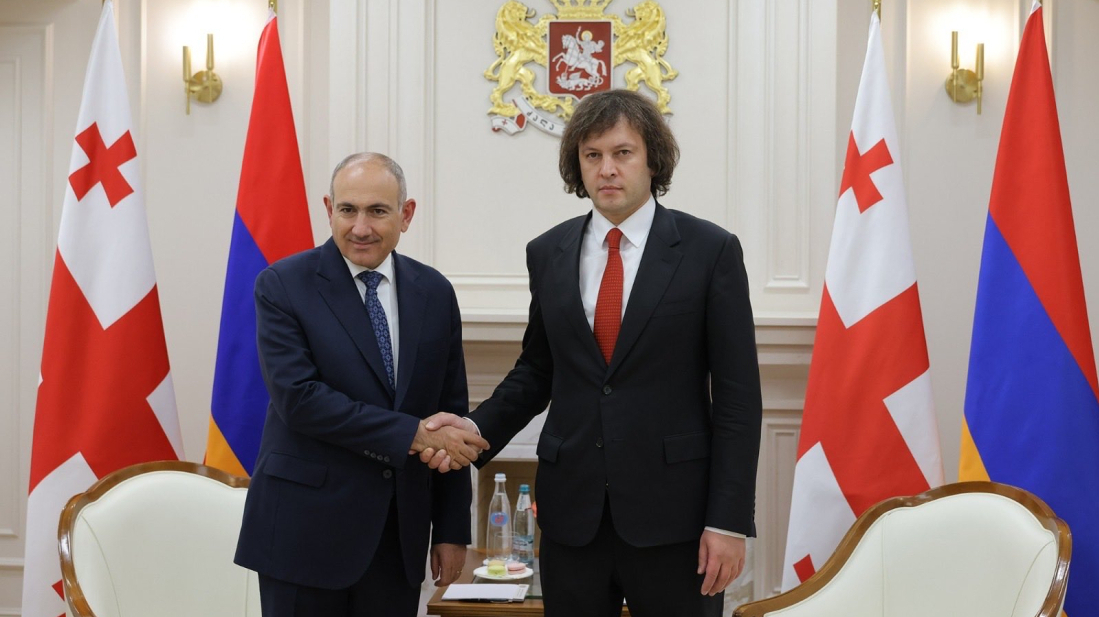One year after AZAL plane crash near Aktau, investigation continues
It’s been a year since an Azerbaijan Airlines plane crashed near Aktau, Kazakhstan, killing 38 people. Relatives and loved ones mourn the victims, a...

The Georgian Defence Minister Irakli Chikovani was in Yerevan, Armenia on Monday for an official visit following an invitation by his Armenian counterpart Suren Papikyan.
At first glance, the meeting appears to be a standard diplomatic exchange. Yet, in today’s South Caucasus where every gesture between neighbours is weighed for political meaning, it reflects the careful balancing underway across the region.
Georgia and Armenia approach this visit from very different but equally uncertain security contexts.
For Georgia, Russian forces remain entrenched in Abkhazia and South Ossetia — a constant reminder that its sovereignty is incomplete and its defence posture constrained.
For Armenia, the aftermath of the 2020 war with Azerbaijan and the fall of Nagorno-Karabakh have left deep political and strategic scars.
Moscow’s declining influence and perceived failure to support Yerevan during critical moments have pushed Armenia to explore new partnerships.
Within this shifting landscape, even a formal, pre-announced defence visit carries symbolic weight.
Both capitals appear intent on keeping communication open while navigating complex relations with Russia, Azerbaijan, Türkiye, and the West.
For Tbilisi, engaging with Armenia fits into a consistent pattern of cautious regional diplomacy.
It allows Georgia to project itself as a constructive and independent player — maintaining stability on its borders while avoiding entanglement in the Armenia–Azerbaijan rivalry.
The visit also helps reaffirm that Georgia’s security outlook is not defined solely by the West or by Russia but shaped by practical cooperation with its immediate neighbours.
Still, Tbilisi remains careful not to appear as taking sides. The tone of the visit was deliberately moderate, focusing on dialogue and partnership rather than new agreements or joint initiatives.
For Armenia, the visit reflects a deliberate shift toward diversification. Since 2020, Yerevan has faced the erosion of Russian credibility as its main security guarantor under the Collective Security Treaty Organization (CSTO).
Armenia has been widening engagement with the European Union, the United States, and NATO member states — while remaining formally part of Moscow-led structures it now openly questions.
Closer coordination with Georgia, a country balancing its own complex relations with Russia, offers Yerevan a way to strengthen regional links without direct confrontation.
Track Record of Gradual Cooperation
This meeting continues a pattern of gradually intensifying defence contacts between the two countries:
While these steps remain largely technical, they have institutionalized communication between the two defence ministries a notable shift compared to the limited engagement of previous years.
The wider regional backdrop remains decisive.
Azerbaijan, now in a position of dominance after regaining full control of Nagorno-Karabakh, continues to strengthen its alliance with Türkiye.
Relations with Moscow, however, have grown more cautious. During the recent summit in Dushanbe, President Ilham Aliyev notably avoided a diplomatic handshake with Vladimir Putin — a small gesture that underscored the coolness in what has often been described as a pragmatic, transactional partnership.
Russia’s influence across the South Caucasus has weakened, yet it still retains leverage through energy routes, border deployments, and the inertia of old alliances.
For now, the Yerevan meeting remains within the bounds of protocol — a sign of dialogue, not a declaration of new strategy.
No new defence agreements were announced, and both sides avoided language that might signal a shift in alignment.
In a region where every diplomatic gesture is scrutinized, the Chikovani–Papikyan meeting stands as a reminder that South Caucasian diplomacy is no longer about grand alliances — but about small, deliberate steps in a landscape still defined by uncertainty.
Thailand and Cambodia both reported fresh clashes on Wednesday, as the two sides prepared to hold military talks aimed at easing tensions along their shared border.
Libya’s chief of staff, Mohammed Ali Ahmed Al-Haddad, has died in a plane crash shortly after departing Türkiye’s capital, Ankara, the prime minister of Libya’s UN-recognised government has said.
A majority of Russians expect the war in Ukraine to end in 2026, state pollster VTsIOM said on Wednesday, in a sign that the Kremlin could be testing public reaction to a possible peace settlement as diplomatic efforts to end the conflict intensify.
Afghanistan and Iran have signed an implementation plan to strengthen regulation of food, medicine, and health products based on a 2023 cooperation agreement.
Military representatives from Cambodia and Thailand met in Chanthaburi province on Wednesday ahead of formal ceasefire talks at the 3rd special GBC meeting scheduled for 27th December.
It’s been a year since an Azerbaijan Airlines plane crashed near Aktau, Kazakhstan, killing 38 people. Relatives and loved ones mourn the victims, as authorities near the final stage of their investigation.
Georgia's Parliament Speaker Shalva Papuashvili has accused Brussels of using visa policy as a political weapon rather than a technical instrument.
Since the end of the 2020 conflict with Armenia, Azerbaijan continues to grapple with the enduring danger of landmines scattered across its regained territories.
U.S. President Donald Trump has invited the leaders of Kazakhstan and Uzbekistan to attend the G20 summit set to be hosted in Miami next year.
The Iranian government has announced plans to build nuclear power plants using domestic industrial capacity in conjunction with Russia.
You can download the AnewZ application from Play Store and the App Store.

What is your opinion on this topic?
Leave the first comment